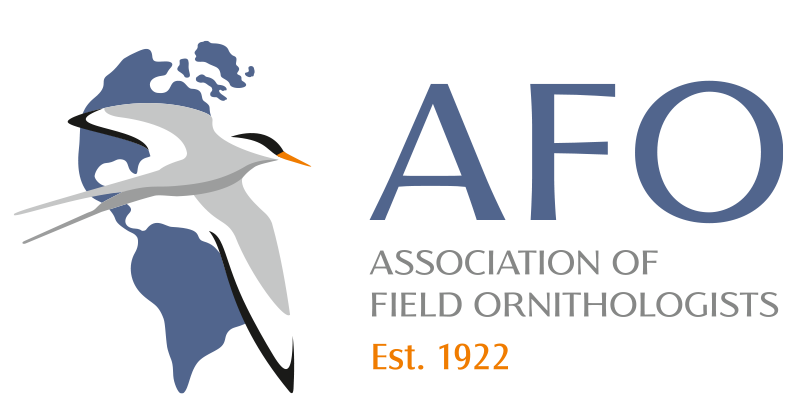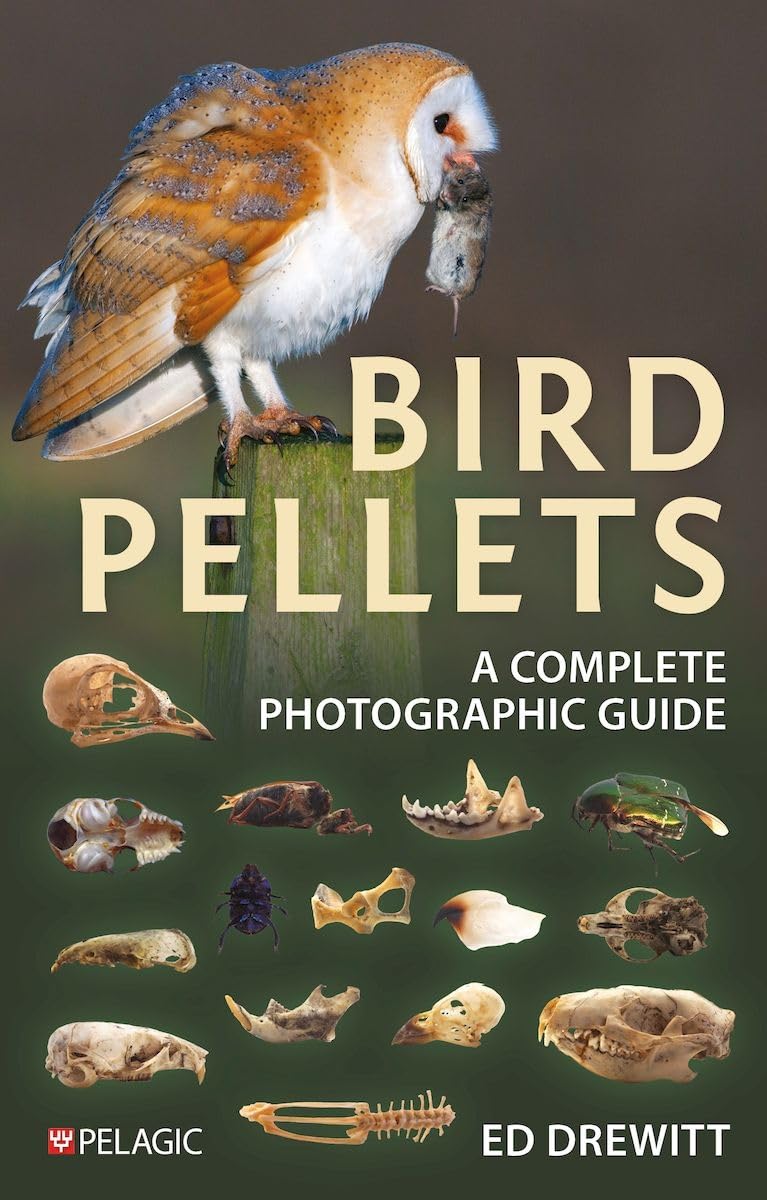Bird Pellets: A Complete Photographic Guide. By Ed Drewitt. 2024. London, United Kingdom: Pelagic Publishing. 258 pp. numerous photographs. ISBN: 9781784274719 paper-back, £41.80, ($51.00)
A field guide for birds is an essential tool for ornithologists and birdwatchers worldwide. Over the last 30 years, advancements in digital cameras and accessible photo editing software have revolutionized the editorial process, shifting many bird field guides from illustrations to photographs of bird species from around the globe. Today, we can quickly find a wide variety of photographic guides available for purchase, representing bird species at national, regional, or local scales, including cities, specific ecosystems, and conservation areas. Birds, as vertebrates, possess unique anatomical features, such as feathers, the ability to regurgitate pellets (in some bird groups), and the ability to lay eggs. Despite these distinctive traits, numerous aspects of their natural history, such as breeding biology and ecology, remain understudied. Although most information is published in the peer-reviewed literature, it can be difficult to glean the salient points from these sources and to synthesize them into a useful field guide format.
A well-designed field guide not only provides relevant bird information but also introduces readers to essential identification skills. For instance, the first book by the author to emphasize identifying bird pellets through photos highlights a critical aspect of understanding the diet and habits of certain bird groups, such as birds of prey and seabirds, which commonly regurgitate pellets near their breeding territories. However, such guides often overlook other bird groups, such as crows and songbirds, that also produce pellets. By focusing on these nuances, the author can effectively draw attention to underrepresented aspects of avian behavior and ecology, making the field guide more comprehensive and informative. Drewitt also includes practical tips for safely collecting and analyzing pellets, ensuring ethical considerations and minimal disturbance to birds. Additionally, the book outlines the broader ecological implications of pellet studies, making a compelling case for their role in understanding food webs and environmental changes.
The cover page features a Barn Owl with its prey, accompanied at the bottom by skulls, bone fragments, and insects. This inviting imagery draws readers into the subjects explored by the author, particularly the study of bird pellets. The primary focus of the book is on bird pellet identification. It successfully guides readers, from young ornithologists, nature lovers to seasoned professionals, through the process of starting pellet identification, considering essential steps, conducting classroom lessons, and performing laboratory analyses. The book is organized into fourteen sections, starting with an introduction and concluding with final considerations. These sections help the readers understand what a pellet is, the general characteristics of pellets, and why collecting them is vital for studying the natural history of birds. Notably, the author brings extensive experience in bird surveys to the ornithology community, making this initiative a significant contribution. The inclusion of color photographs of pellets, bone fragments, and other prey items found within pellets provides readers with a clear idea of what to expect during fieldwork. The book’s high-quality photographs and clear explanations make it an excellent addition to public exhibits or educational programs. This is especially valuable, as young ornithologists and birdwatchers might spend significant time in the field without recognizing or noticing pellets.
Understanding how to properly collect and analyze pellets is crucial for answering questions and testing hypotheses in ornithological research. Although much of the fieldwork and pellet collection described in the book was conducted in the United Kingdom, this enhances the author’s credibility and could inspire a global initiative to collect and study bird pellets. One additional point for consideration is that while the book focuses on pellet identification, it assumes readers already possess basic bird identification skills. For young birdwatchers or beginners without such skills, the author could enhance the book by referencing complementary resources, such as a bird field guide, even though the author cites the Latin and common bird names in the index. Briefly introducing the bird species associated with the pellets, without providing complementary information, could make it challenging for beginner ornithologists to associate bird species with their pellets. Including such resources would make the book more accessible to a broader audience and encourage comprehensive learning.
To conclude, for ornithologists, nature enthusiasts, and bird lovers, this book serves as a crucial reference for those entering the field of bird food ecology. Drewitt’s expertise and passion shine through, making this book an essential addition to the library. It encourages a multidisciplinary approach, making it an invaluable resource for undergraduate and graduate students, as well as professors working on projects related to bird ecology and natural history. This book is a pioneering resource that fills a critical gap in ornithological literature. Its comprehensive coverage of bird pellets, from formation to analysis, and its practical applications make it an indispensable tool for researchers, educators, and enthusiasts alike.
Rafael Fernandes
Peninsula Field Naturalists Club, St. Catharines, ON. Canada
rafaelfdm@hotmail.com
https://orcid.org/0000-0002-5204-7674
Header photo: Barn Owl (Tyto alba) | Wirestock via Getty Images Pro
Suggested citation:
Fernandes, R. Review of the book Bird Pellets: A Complete Photographic Guide by Ed Drewitt. Association of Field Ornithologists Book Review. https://afonet.org/2025/02/bird-pellets-a-complete-photographic-guide/
If you are interested in contributing a book review, or if there is a book you would like to see reviewed on our site, you can contact our Book Review Editor, Evan Jackson at evan.jackson@maine.edu

